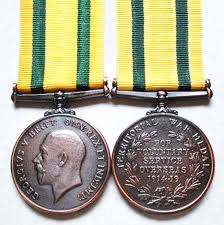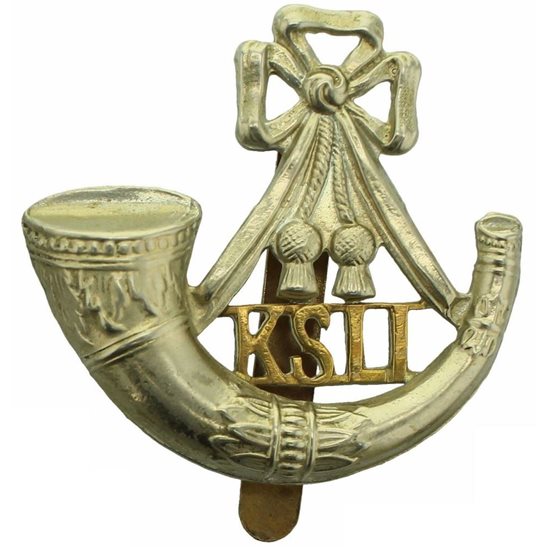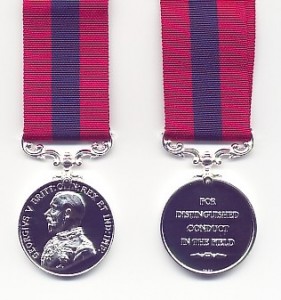Personal Details
Born: 10 February 1876 in Whitchurch, Shropshire and baptised on 8 March the same year in St. Alkmund’s Parish Church, Whitchurch.
Family: He was the second of eight children born to Kenrick Wilson, a railway signalman, and his wife Emma. Kenrick married for a second time to Annie and together they had 5 children – George’s half siblings. He married Mary Sophia Pugh in 1904 in Atcham, Shropshire and together they had five children – Doris Emmeline, Lois Eva, George Henry, Dora Lily and Ernest Reginald.
Residence: In 1881 the family were living Adjoining Railway, Chetwynd Aston, Newport, Shropshire (George’s father was the railway signalman). By 1891 they had moved to John Street, Castlefields, Shrewsbury, Shropshire. George served in the Royal Welsh Fusiliers between 1892 and 1911, stationed in Malta, Crete, Egypt, China, India and Ireland and was discharged 1 October 1911. When he re-enlisted in 1912 he was living at 15 New Street, Frankwell, Shrewsbury. In 1939 he lived at 2 Raebrook Place, Shrewsbury.
Employment: In 1891 he was a clerk at timber merchants; between 1892 and 1911 he was serving in the Royal Welsh Fusiliers. When he rejoined the army in 1912 he stated his occupation as clerk; in 1939 he was a part time canteen steward.
Died: In 1944, age 68, in Wellington, Shropshire.
Military Details
Regiment: King’s Shropshire Light Infantry
Rank: Sergeant
Service Number: 200261 (previously 1642)
Date of Enlistment: 14 June 1912
Date of Discharge: 20 March 1919
Reason for Discharge: Demobilisation
Other Information: He served with Royal Welsh Fusiliers (number 3757) enlisting 1 November 1892 and discharged 1 October 1911.
George was awarded the Distinguished Conduct Medal, Campaign Medals (British War Medal and Victory Medal) and the Territorial Forces War Medal
The following Whitchurch men were recipients of the Distinguished Conduct Medal :
43987 2nd Cpl. G. G. Wyatt, 16th Div. Sig. Coy., Royal Engineers
Whitchurch, Shropshire – 31 December 1918
11851 Pte. G. M. Sergeant, 6th Bn., King’s Shropshire Light Infantry
Whitchurch, Shropshire – 30 May 1919
67045 Bombardier George Hopwood, 33rd Brigade, Royal Field Artillery
Whitchurch, Shropshire – 3 August 1915
Bombardier J Groom
Sergeant G H Wilson

The British War Medal (also known as 'Squeak') was a silver or bronze medal awarded to officers and men of the British and Imperial Forces who either entered a theatre of war or entered service overseas between 5th August 1914 and 11th November 1918 inclusive. This was later extended to services in Russia, Siberia and some other areas in 1919 and 1920. Approximately 6.5 million British War Medals were issued. Approximately 6.4 million of these were the silver versions of this medal. Around 110,000 of a bronze version were issued mainly to Chinese, Maltese and Indian Labour Corps. The front (obv or obverse) of the medal depicts the head of George V. The recipient's service number, rank, name and unit was impressed on the rim.
The Allied Victory Medal (also known as 'Wilfred') was issued by each of the allies. It was decided that each of the allies should each issue their own bronze victory medal with a similar design, similar equivalent wording and identical ribbon. The British medal was designed by W. McMillan. The front depicts a winged classical figure representing victory. Approximately 5.7 million victory medals were issued. Interestingly, eligibility for this medal was more restrictive and not everyone who received the British War Medal ('Squeak') also received the Victory Medal ('Wilfred'). However, in general, all recipients of 'Wilfred' also received 'Squeak' and all recipients of The 1914 Star or The 1914/1915 Star (also known as 'Pip') also received both 'Squeak' and 'Wilfred'. The recipient's service number, rank, name and unit was impressed on the rim.

The Territorial Force War Medal was a campaign medal awarded to members of the British Territorial Force and Territorial Force Nursing Services who served overseas in World War I; it is the rarest of the five British Great War medals.
The medal was established in April 1920 for award to members of the Territorial Force and Territorial Force Nursing Services who volunteered for service overseas on or before 30 September 1914, and served overseas. They had to have been serving with the force on 4 August 1914 or have completed four years service with the force before 4 August 1914 and rejoined the force on or before 30 September 1914.


